The question of how to physically handle televisions and monitors with broken glass at electronic recycling collection centers is challenging and as yet unresolved.
Most of the people with whom I have spoken have agreed that it would be a good solution for a television with broken glass to be put into a cardboard box for transportation to the recycling center.
The industry standard large cardboard boxes are called Gaylords and are readily available both new and used. Used Gaylord boxes can be purchased for as low as $7.95 in bulk and are themselves reusable, further reducing their cost per use.
Here are two examples of Gaylord boxes:
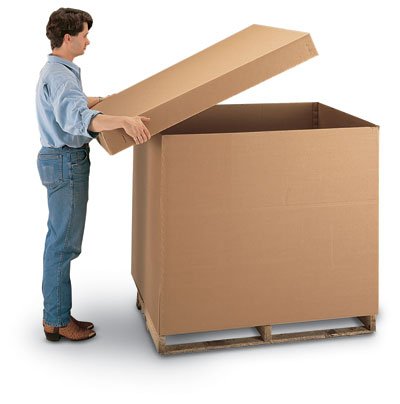
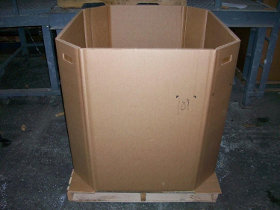
Note that Gaylord boxes are typically on pallets to facilitate them being moved in industrial environments using a forklift or a pallet jack.
The challenge now becomes how to safely move televisions with broken glass from the customer’s vehicle into one of these Gaylord boxes.
One solution that was considered was an overhead gripper claw that would lift the televisions out of a customer’s trailer or pickup truck and put them in the Gaylord box. This solution was rejected because it didn’t answer the question of how to get televisions out of the back of an enclosed vehicle like a station wagon, and because it was not found to be a reliable way to move broken televisions of all sizes.
A better solution is the use of a simple lifting and tilting platform. The idea is to use a rope or nylon sling to pull the television out of the customer vehicle and onto the platform. The customer’s vehicle would then be pulled away and the platform lifted to the height of the Gaylord box. The Gaylord box would be placed in the position of the person’s vehicle and the platform tilted to dump the television into the waiting box. This solution eliminates the need for collection center employees to handle potentially dangerous broken glass. Sides could be put on the platform to prevent broken glass from falling off the edges.
These lifting and tilting platforms are standard material handling equipment and are available from many sources. Here are a few examples:
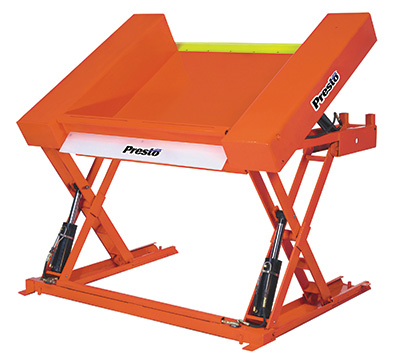

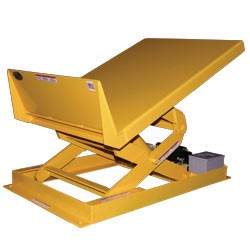
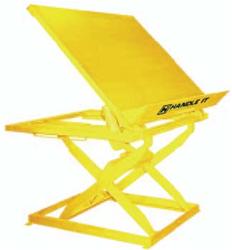
The units pictured here are electric and pneumatic, and are designed to lift thousands of pounds. For recycling use, a lighter duty and purely mechanical platform would be cheaper and more reliable. All of the platforms shown here have a front lip on them to prevent material being handled from falling off the front edge. For recycling, a platform without a front lip would be needed for dumping the contents into a Gaylord box.
Although all of the details have not yet been worked out, employing a lifting and tilting platform would be a practical solution for use at electronic recycling collection centers.